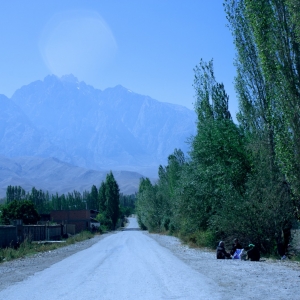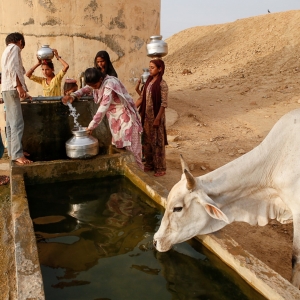Federal Water Tap, May 10: White House Releases Conservation Roadmap
The Rundown
President Biden aims to conserve 30 percent of the country’s lands and waters by 2030. The GAO says that the method for assessing farmer compliance with wetlands protections should be updated. The EPA assesses a draft nutrient-reduction plan in the Chesapeake Bay watershed. NOAA releases new baselines for “normal” climate in the United States. Nuclear regulators evaluate a proposal to send a decommissioned nuclear plant’s wastewater from Vermont to Idaho for disposal. And lastly, President Biden visits a water treatment plant in Louisiana.
“Infrastructure is all about making life livable for ordinary people and this is the most basic thing.” — President Joe Biden referring to investment in drinking water systems while touring the Carrollton water treatment plant in New Orleans. Biden visited Louisiana to stump for his American Rescue Plan infrastructure package. His deputies were also in the field. Michael Regan, the EPA administrator, toured a water treatment facility in St. Louis.
By the Numbers
$2.5 million: Funding from the Bureau of Reclamation for a dozen projects that will investigate ways to improve snow measurement and water supply forecasting. The projects will use artificial intelligence, remote sensing, and ground-based systems.
2 million gallons: Volume of wastewater with “low-level radioactivity” from the decommissioned Vermont Yankee nuclear power plant that needs to be disposed of. The U.S. Nuclear Regulatory Commission found that there would be no significant environmental impact from the proposed solution: moving the wastewater in rail cars from Vermont to a facility in Idaho, some 2,500 miles to the west. The NRC approved a similar request in 2016 to move 200,000 gallons of wastewater from the power plant to Idaho for disposal.
News Briefs
Biden Conservation Plan
The White House released its roadmap for a decade-long conservation plan that would protect 30 percent of the country’s land and waters by 2030.
The document identifies key principles in executing a far-reaching conservation strategy: collaborative efforts that are locally led and offer benefits to all people and support the priorities of tribal nations. The conservation plan should also create jobs, respect private property rights, and be guided by science.
The document states the need for high-quality data to guide the effort, starting with baseline information on lands and waters that are already protected.
Climate Normals
As it does every decade, NOAA updated its definition of “normal” climate in the United States.
“Normal” precipitation and temperature are based on 30-year intervals. The 1991-2020 period, which NOAA released last week, replaces the 1981-2010 period.
Thanks to the continued buildup of heat-trapping gases in the atmosphere over the last decade, “normal” is now warmer pretty much everywhere. The northern states and Southeast are wetter than the previous period, but the Southwest is drier.
Studies and Reports
Chesapeake Bay Nutrient Reductions
The EPA assessed a draft nutrient-reduction plan in the Chesapeake Bay watershed that centers on a key dam in Maryland.
Conowingo Dam, on the Susquehanna River, has prevented sediments and nutrients from flowing into the bay, which is on a nutrient-pollution diet. Because the dam is old, the reservoir is filling up with sediment and its ability to control pollutants is diminishing.
To meet pollution-reduction targets, the Chesapeake Bay states will have to offset the performance of Conowingo dam. The states submitted such a plan, which emphasizes nitrogen reductions from the agriculture sector.
In its evaluation of the report, the EPA suggested more information about funding and financing the reductions and how priority areas will be identified.
Are Farmers Actually Protecting Wetlands?
Farmers who agree not to plow wetlands on their fields are eligible for federal conservation payments. The Natural Resources Conservation Service is responsible for overseeing the program and making sure that farmers are abiding by conservation agreements.
According to a Government Accountability Office report, NRCS should change the methods it uses to check compliance. Instead selecting fields at random, the agency should instead use a risk-based approach, which would focus on tracts of land that are more likely to have violations. NRCS said it did not use this approach because it did not want to appear to be targeting certain farmers.
The GAO focused its investigation on the prairie potholes region, an area that extends across the Dakota, Iowa, and Minnesota that is rich in wetlands. From 2014 to 2018, NRCS did compliance checks on just 0.5 percent of farm tracts participating in the program.
On the Radar
EPA Competition for Better Water Pollution Sensor
The EPA and other federal agencies are sponsoring a competition for improved water tech.
The goal is to develop cheaper, faster water sensors for detecting chemical pollutants and natural toxins like those produced by cyanobacteria.
The competition runs through July 26. The EPA will hold an informational webinar on June 8.
Federal Water Tap is a weekly digest spotting trends in U.S. government water policy. To get more water news, follow Circle of Blue on Twitter and sign up for our newsletter.
Brett writes about agriculture, energy, infrastructure, and the politics and economics of water in the United States. He also writes the Federal Water Tap, Circle of Blue’s weekly digest of U.S. government water news. He is the winner of two Society of Environmental Journalists reporting awards, one of the top honors in American environmental journalism: first place for explanatory reporting for a series on septic system pollution in the United States(2016) and third place for beat reporting in a small market (2014). He received the Sierra Club’s Distinguished Service Award in 2018. Brett lives in Seattle, where he hikes the mountains and bakes pies. Contact Brett Walton






Leave a Reply
Want to join the discussion?Feel free to contribute!